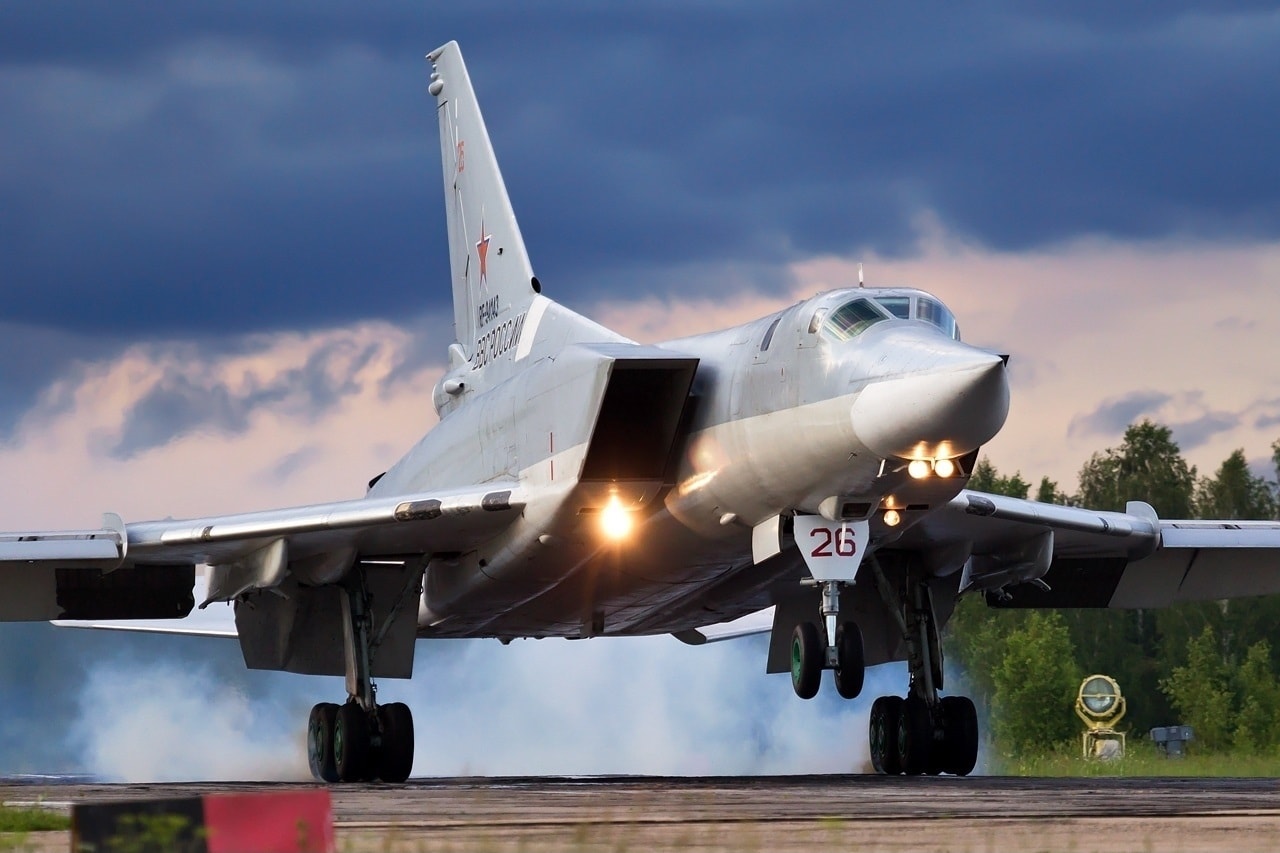Where are Russia’s Bombers Over Ukraine?
Since Russia’s Aerospace Forces possess one of the world’s largest arsenals of bombers of all types, one would expect that Russian bombers would play an active role in Russia’s 2022 invasion of Ukraine. Especially given Russia’s heavy reliance on artillery and air bombardment to pave the way for its troops in battle, Russia’s long-range aviation would presumably factor in very heavily to Russian combat operations. So why has Russia’s bomber fleet been spotted in the skies above Ukraine?
Use of Russian Long-Range Aviation to Date
The scope of Russia’s use of its long-range aviation in its invasion of Ukraine is not entirely agreed upon. In the first hours of Russia’s invasion, an official in the U.S. Department of Defense speaking anonymously with CBS News said that as many as 75 Russian long-range bombers may have taken part in the opening actions of Russia’s invasion of Ukraine, launching cruise missiles at fixed targets across Ukraine.
The Ukrainian military first acknowledged Russia’s use of bombers in its invasion in mid-April, more than a month after the beginning of the Russian invasion of the country. Some video evidence of Russia’s use of bombers in its invasion of Ukraine emerged in early May, which appears to depict a Russian Tu-22M3 bomber launching cruise missiles at targets potentially located in Ukraine.
Most, if not all, Russian uses of long-range aviation in Ukraine make use of stand-off cruise missiles to attack fixed or stationary targets. With the long-range of Russian cruise missiles such as the Kh-101, Russian bombers such as the Tu-22M and Tu-160 can fire on targets located well within Ukraine without having to exit Russian airspace. The Kh-101 is estimated to have a range of 2,500 to 2,800 kilometers, which means that all of Ukraine, let alone most of Europe is in range of Russian stand-off cruise missiles, which also minimizes the number of Russian bombers operating directly over Ukraine.
Ukrainian Air Defenses Complicate Russian Bombing Missions
This stand-off capability is predictably safer for Russian long-range bombers, which do not need to risk interception by Ukrainian aircraft or air defenses. Russia’s inability to destroy or otherwise sufficiently suppress Ukraine’s air defenses and air force has limited the Russian Aerospace Forces’ broader ability to operate freely over much of Ukraine. Russian air superiority in Ukraine has instead been limited to a much narrower scope – instead of controlling the skies over all of Ukraine, Russia is instead currently concentrated on mastering Ukrainian airspace over Donbas, where it is currently making incremental gains. This is one of the primary incentives driving how Russian bombers to rely on stand-off missiles.
Frequency of Russian Bomber Sorties May be Dependent on Availability of Munitions
External analysts have noted that the frequency of Russian cruise-missile strikes launched from all platforms appears to be slowing, with a likely culprit for the decline being the depletion of Russian cruise missile stocks over the course of the invasion so far. Russian stocks of precision-guided munitions (PGMs), which it has increasingly leaned on in recent military campaigns, have been stretched significantly by its Ukraine invasion.
Western technology and financial sanctions have also hampered the ability of Russia’s domestic arms industry to replace depleted PGM reserves, such as that of the Kh-101 or other air-launched cruise missiles, which could further slow the frequency of Russian long-range bomber sorties against Ukraine in the future.
While Russian bombers have been largely absent from the skies above Ukraine in Russia’s invasion, they have indeed been used as part of the invasion as frequently as Russia can muster in a stand-off configuration.
Wesley Culp is a Research Fellow at the Center for the Study of the Presidency and Congress. He regularly writes on Russian and Eurasian leadership and national security topics and has been published in The Hill as well as in the Diplomatic Courier. He can be found on Twitter @WesleyJCulp.

